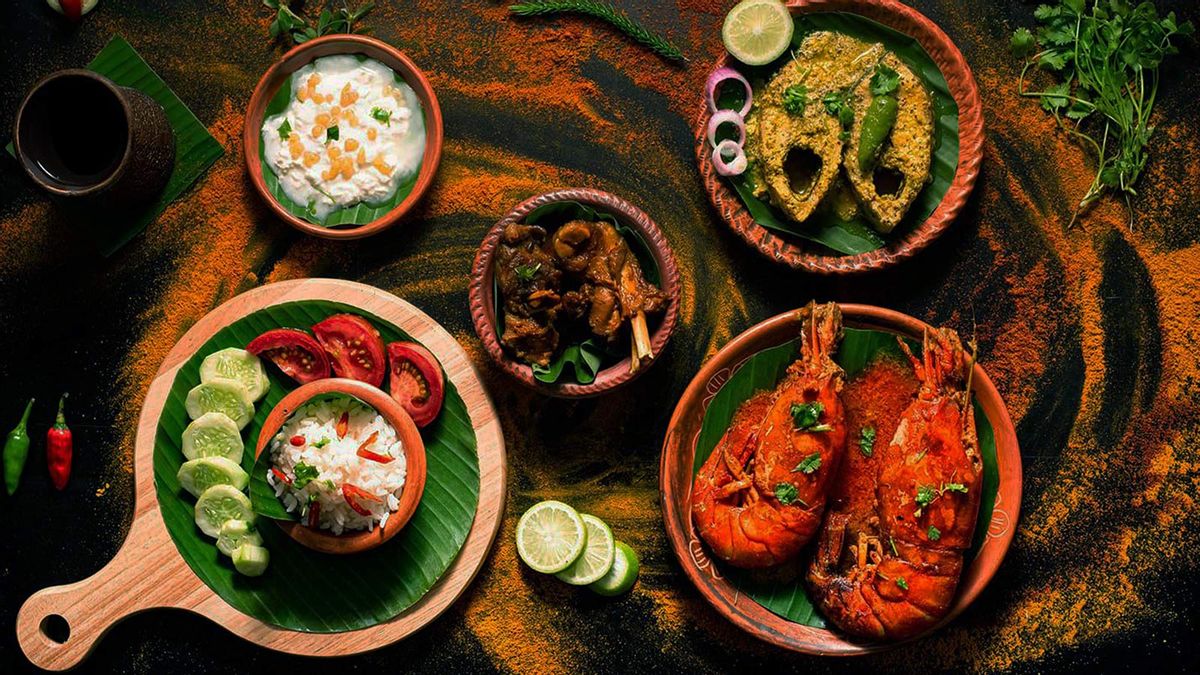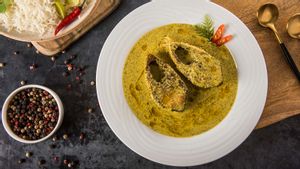If there’s one thing all Bengalis have in common, it’s their incorrigible love for food. All kinds of tasty delicacies - ranging from fish to meat and vegetarian preparations - in the perfect blend of sweet and spicy flavours - feature on the Bengali table.
Bengali cuisine characteristics - like the strong hints of mustard, the ever-popular varieties of river fish like hilsa and bhekti and the rice that completes the traditional Bengali meal - are well known. But the way Bangla cuisine changes as one travels from the West to the East of Bengal is quite impressive.
Cooking up a Storm
“While the spices are very similar in both cuisines, the cooking techniques are somewhat different,” notes Sudeshna Banerjee, the founder of Bengalicuisine.net whose grandparents moved from Bangladesh to India during the Partition in 1947.
Though her parents were born in India, their cooking habits are still mostly derived from Bangladesh. “After marrying my husband Kalyan, whose parents are from the Bankura district of West Bengal, I noticed quite a few differences between my mother and my mother-in-law’s style of cooking,” she points out.
A little probing reveals that people from Bengal (Ghotis) are quite liberal with their sugar use. Be it a fish curry or a spicy mutton recipe, the use of sugar is almost a must. On the other hand, people from Bangladesh - or those like Banerjee's parents and grandparents who came to India after the Partition (Bangals) - don’t use sugar for its flavour. Instead, sugar adds a reddish-caramelised colour to their curry.
The Nawabi Connection
Chef Sirajul Rahaman from Novotel Kolkata, an expert in Bengali and other Indian cuisines, confirms that while there are many similarities between Bengali and Bangladeshi food, there are some striking differences as well.
Rahaman tells us that the food in East Bengal features a more substantial Mughal influence, making Bangladeshi dishes richer than their Western counterparts.
Oily and decadent, this cuisine uses ghee generously and other rich ingredients like cashew nuts and coconut milk. “And no tari (a type of oil mixed with red chilli powder that floats on the gravy) means no mazza (fun),” confesses Chef Rahaman. Without generous oil, Bangladeshis will liken the meal to hospital food!
“Streets are where you find the most authentic Bangladeshi food,” says Chef Rahaman, “but looking at the oil, you might think twice before eating.” Bengali food is certainly less calorific in comparison, but it earns its richness thanks to the famous Jharna ghee’s use. No bong would ever leave home without it. “The popular brand of cow milk-based ghee from the Sundarban Dairy is a reminder of home,” says Chef Rahaman.
Meat Matters
In general, Bengalis are also hardcore carnivores and Chef Rahaman admits that at a buffet in Kolkata the vegetarian items are sometimes likely to go untouched. From Murgh Do Pyaza (chicken cooked in onions and tempered with mustard seeds) to Bati Chingri (prawns cooked with mustard gravy and spring onions), non-vegetarian dishes are intrinsic to Bangla cuisine. In East Bengal, however, the love for meat is taken to a whole new level.
“The food here features egg and meat even in dals and vegetables,” says Chef Rahaman. “It’s not surprising to find items like kaleji or bheja (liver or brain) on the breakfast menu,” he adds.
The Mughal Empire in Bengal is also responsible for Bangladeshi cooking’s heavy dependence on beef. The famous Kosha Mangsho, a beef delicacy, has its origins in Dhaka.
With the end of the Mughal Empire in Bengal, the Mughal-trained cooks realised that beef would not sell and mutton on the food carts for religious reasons and so they modified the dish. Nevertheless, like Bengalis love their mutton, Bangladeshis still love their beef.
Banerjee tells us that another significant example of the Mughal influence on Kolkata’s cuisine is potatoes in biryani.
Bengali cuisine offers quite a variety of pure vegetarian dishes as well. These include Chanar Dalna (a cottage cheese preparation), Kumror Chokka (pumpkin and black chickpeas cooked in mustard oil), Phulkopir Kalia (cauliflower cooked in mustard paste) and Sobji Dal (lentils cooked with vegetables). “One key difference though is that Ghotis like to cook vegetables to a point where they are almost mashed up in the curry while Bangals like it al dente,” adds Banerjee.
For the love of fish
Thanks to their location within the Ganges delta, both West Bengal and Bangladesh have one thing in common - the fish connection. “In Bengal, people are not just concerned with what fish is being served but also where it is from,” Chef Rahaman reveals.
Hilsa from the Padma River is the most popular in Bangladesh, and the head of this fish is often used in some vegetarian preparations. On the other hand, “the tastiest bhekti fish is caught in the Digha River of Kolkata, and a true Bengali would always choose the Gondhoraj variety,” he informs.
As Ghoti families simply cannot do without posto or poppy seeds in their cooking, Posto Maach (fish cooked in poppy seed paste) is quite a delicacy. “The star of Bangladeshi cuisine is the famous Shutki (dried fish curry),” Banerjee says.
Let’s Sweeten the Deal
Finally, neither a Bangladeshi nor a Bengali meal is complete without dessert. Common to both is the well-known paayesh (kheer), but this sweet dish also enjoys a little variety as it travels from West to East. The Bengali paayesh is made with glutinous rice, milk and sugar, while the Bangladeshi one uses coconut milk and semolina.
Almonds, cashews and other dried fruits usually enhance both versions and cardamom and saffron in more sumptuous meals.
Despite the differences, whether you’re eating at a Ghoti or Bangal home, you’re bound to be served a delectable array of dishes that will wow your tastebuds so don’t forget to wear your stretchy pants!
ZeeZest.Com · Finding Food: Cuisine from East and West Bengal





